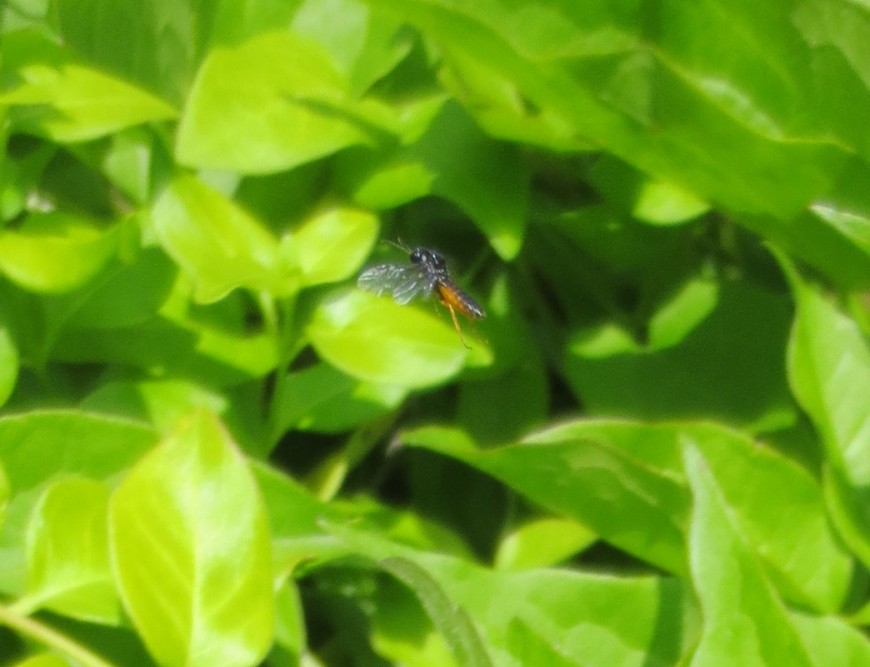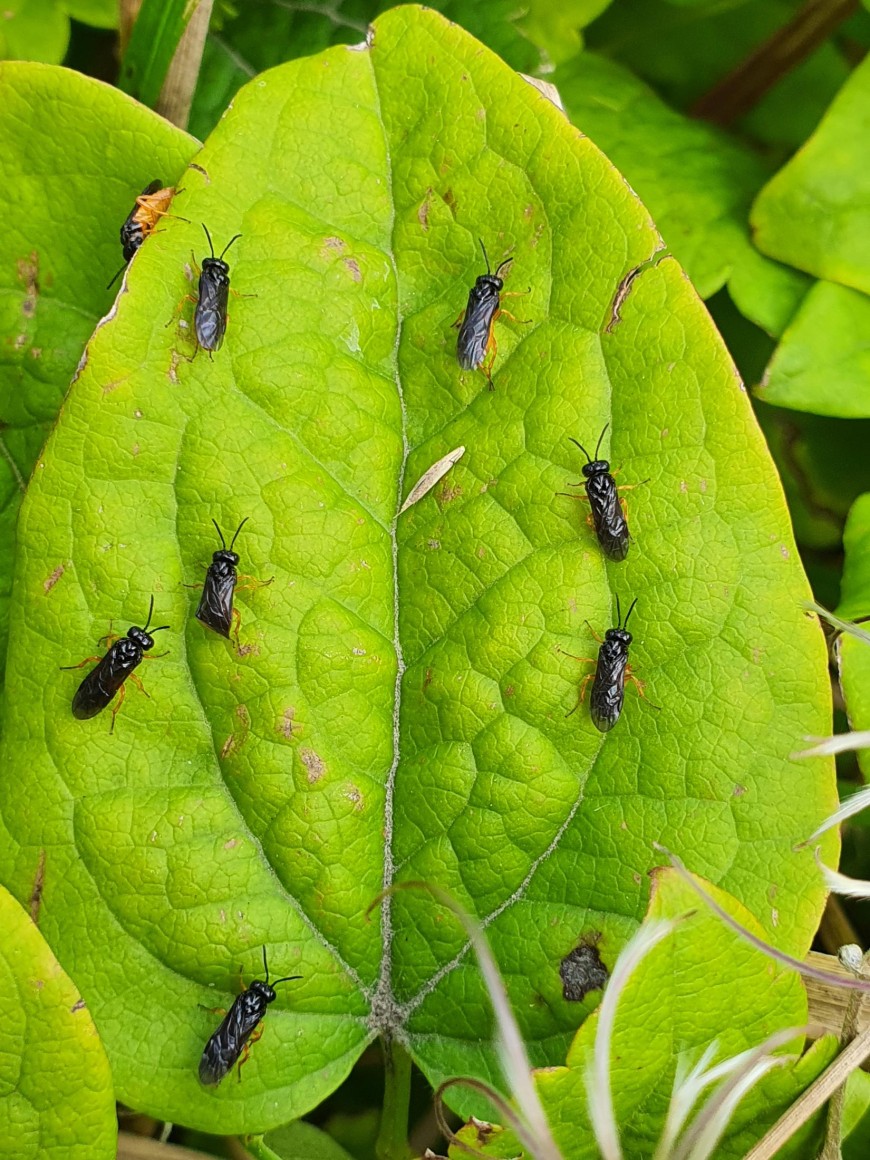Old man's beard sawfly
History in New Zealand
Old man’s beard sawflies were first imported into containment by Manaaki Whenua - Landcare Research in 1997 from central Europe, after being approved for release in New Zealand in 1996. Field releases began in 1998, but difficulties with mass-rearing this agent meant that it was only released at a limited number of sites. In 2015, a survey found a population of the sawfly established at one site near Nelson where it remains rare. The reasons for poor establishment of the sawfly are not well understood, but predation by wasps and/or genetic bottlenecks during the rearing process could have hampered successful establishment.
In 2018, a new population of the sawfly from Serbia was imported into containment at Lincoln. Improvement of the rearing method led to the release of thousands of larvae in the Canterbury Region, in the Waipara District. This population established successfully, and growing number of adults and larvae have been observed over recent years. Collection and redistribution to other sites have started in 2023. The sawfly has not been used as a biocontrol agent anywhere else in the world.
How would I find/recognise it and what is its lifecycle?
Adult females sit on the undersides of the leaves and are often hard to see. You are more likely to see the males when they are swarming around the plant searching for females to mate with. It is easy to tell the sexes apart. The males are smaller (about 5-6 mm long) than the females (about 6-8 mm). Both look like small black flies, but their body colouration is different. Female sawflies have a chunky orange thorax and yellow abdomens with a black saw-like ovipositor that looks like a sting at the tip of their abdomen. The males have a small, dark-coloured thorax and their abdomens are black above and yellow below. The first generation of adults can be seen flying during warm days in November and the second generation can be seen from early February to mid-March, while larvae can be found until April.
Image: female sawfly (Monophadnus spinolae).

Image: male sawfly (Monophadnus spinolae).
Sawflies are easiest to spot at this stage and, being white, the larvae stand out quite easily against a green backdrop. Search in areas where you can see damaged leaves and balls of black frass. The only insect on old man’s beard that you could confuse the larvae with is the occasional pale green leafroller caterpillar. However, sometimes other insects damage the leaves in a similar way, so to be sure that the old man’s beard sawfly is responsible, you would also need to see the white larvae and/or their black frass.
In southern central Europe the old man’s beard sawfly has two generations per year. The first generation of larvae produced in the spring, drop to the ground and pupate for a few weeks, emerging as adults by mid-summer. The second generation remain in their pupating cocoons from late summer right through until the following spring. In the milder oceanic climate of New Zealand, there may be sufficient time for the sawflies to complete a third generation.
How does it damage old man’s beard?
The larvae are the damaging life stage. The adults do not feed on old man’s beard. Larvae usually start feeding on the leaf edges and make semicircular cuts along the leaf margins. A single larva may eat several leaves, sometimes leaving only the central vein intact.
Image: sawfly larvae and their chewing damage.
Image: old man's beard sawfly feeding damage.
See Old man’s beard leaf fungus, Old man’s beard leaf miner and Old man’s beard mite.
Will it attack other plants?
No, old man’s beard sawflies are extremely unlikely to attack any plants other than old man’s beard (Clematis vitalba).
How effective is it?
It is too early to know what impact this new Serbian population will have on old man’s beard at the sites where it has established. However, sawflies can be highly damaging if they can build up large populations. For example, the willow sawfly (Nematus oligospilus), an exotic invader, can cause severe damage to willow trees.
How can I get the most out of it?
Recent attempts to relocate it from the nursery site in the Waipara District to other areas has just started in 2023. We will continue to monitor the new release sites to assess the potential for collection and redistribution to new sites if they start to build up large numbers.
Key contact




